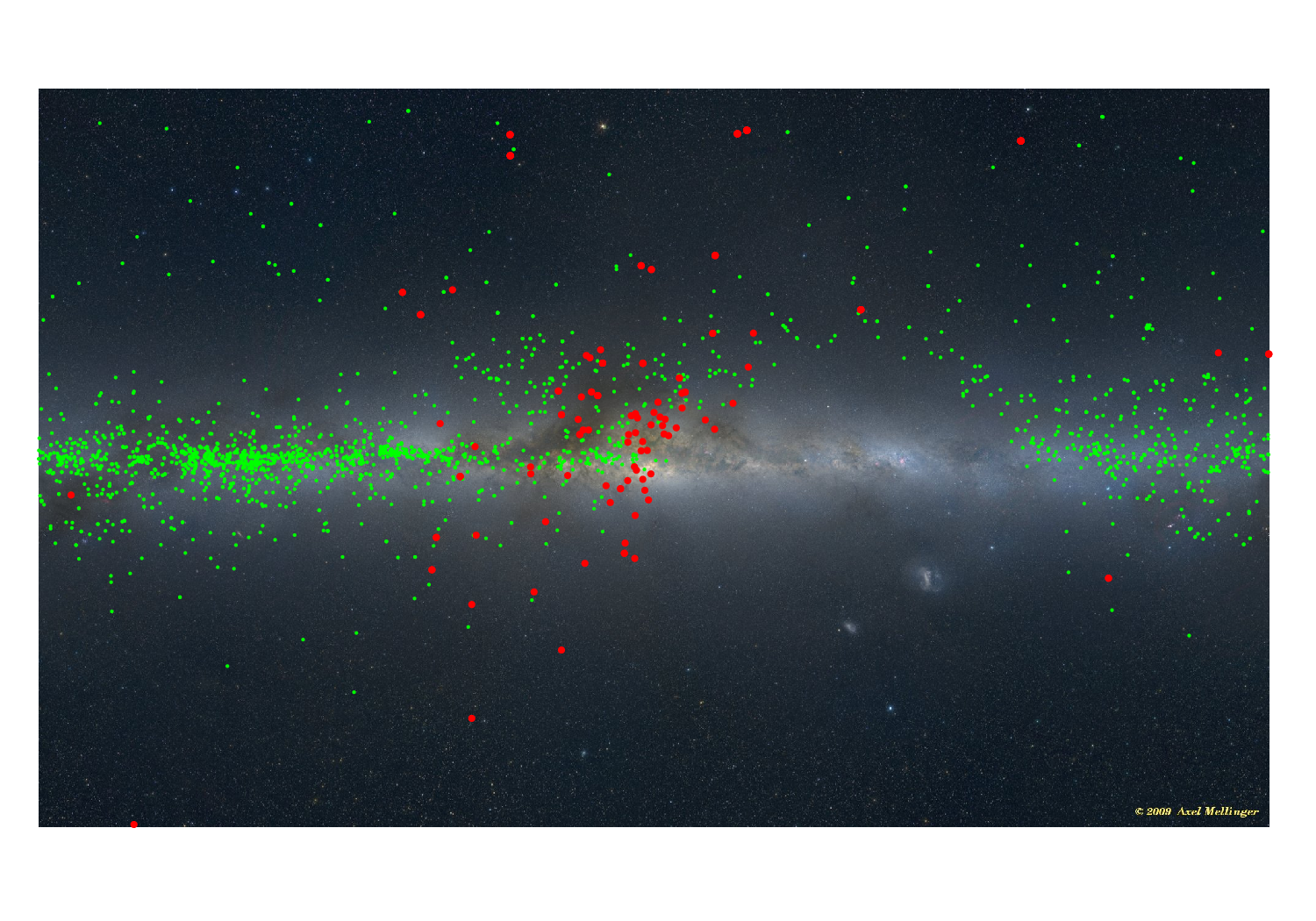Galactic Cluster UBVRI Survey

INTRUDUCTION
Open clusters (OCs) are groups of loosely gravitationally bound stars that formed from the same cloud and at the same time. Because of this, galactic OCs are good tracers of the star formation history and the chemical and dynamical evolution of the galactic disk and their study has allowed to attack a wide range of astrophysical problems like: star formation and evolution processes, dynamical evolution of stellar systems, formation and evolution of the Galaxy, abundance gradients in the disc, the age-metallicity relationship of the Galaxy, the location of the inner spiral arms, and the determination of the corotation distance for example. By means of photometric techniques, and stellar evolution models, it is relatively easy to derive the basic astrophysical parameters of OCs like interstellar reddenig, metallicity, distance and age. Although 75% of the clusters from Dias et al. (2002) catalog have determined distances, ages and colour excesses, these parameters are found in different instrumental setups and by different methodologies; therefore, they may differ from each other systematically. This is why the creation of a homogeneous catalog of the physical parameters of open clusters is still a very actual task. Such a catalog would allow us to study the properties of the galactic disk more accurately and reliability.
OBSERVATIONS
Observations are being carried out at the San Pedro Martir Observatory (SPMO) (Baja California, Mexico) using the 0.84m (f/15) Ritchey-Chretien telescope, the Mexman filter wheel and the ESOPO CCD detector. The ESOPO (with a 2048×4608 13.5μm square pixels e2v CCD42-90 CCD), has a gain of 1.7 e‾/ADU and a readout noise 3.8 e‾ at 2×2 binning as in our observations. The combination of the telescope and detector give an unvignetted field of view of ∼7.4×9.3 arcmin2. Each open cluster is observed through Johnson's UBV and Cousins' RI filters with short and long exposure times in order to properly expose both the bright and dimm stars of the fields. Landolt's standard stars are also observed near the meridian and at ∼2 airmasses in order to be able to calculate transformation equations from the instrumental to the standard system. Flat fields are taken at the beggining and end of each night and biases are taken between cluster observations.
DATA REDUCTION
The data reduction is carried out with the IRAF package and some home made auxiliary programs and scripts. The supervised-automatic procedure implemented can be condensed as follows:
All the images are bias subtracted and flat field corrected (CCDRED) and cosmic rays are removed with the help of the L.A. Cosmic script. The images of each set of observations, for both clusters and standards, are aligned and trimmed (IMALIGN) and a template image of each field is generated. Using the template images, reference images from the ESO Digital Sky Survey, and the 2MASS All-Sky Catalog of Point Sources the astrometry is calculated (CCMAP and CCTRAN) providing a way of determining the equatorial coordinates of each measured star.
For each image, the average sky level and its standard deviation are calculated (IMSTAT), as well as the average fwhm of the stars in the field (DAOFIND and FITPSF). With this information bright, unsaturated and isolated stars are indentified and then DAOPHOT is used to build a point spread function (PSF) for each image and to calculate the instrumental magnitudes of each star (ALLSTAR). Aperture corrections are then computed using PHOT (with a set of apertures going up to the defines standard aperture and MKAPCORR.
Aperture photometry (PHOT) of all the stars in the standard fields is done using a fixed aperture radius and, using the previously calculated astrometry, pixel coordinates are converted to equatorial coordinates so that the standard stars are automatically identified by comparing these coordinates to those in a catalog composed of the original Landolt stars suplemented with secondary standards reported by Clem and Landolt and other secondary standards (in fields not reported by Clem and Landolt) measured by us.
the is based on sol\ the . and, with the calculated astrometry and the coordinates in the standards catalog fwhm of the run. With these data, and that in Landolt's catalog, the transformation equations were calculated using the ten pairs of equations shown in Equation~\ref{tab:equations}. In a first pass only extinction pair of measurements were used to calculate the zero points ($z$), extinction ($k$) and colour-extinction ($p$) terms. In a second pass all the data is used fixing the extinction and colour-extinctions terms and re-calculating the zero points and introducing the colour ($c$) terms. In a third pass quadratic colour terms ($q$) are introduced with the initial values of $z$ and $c$ as before and keeping ($k$) and ($p$) fixed. New images that contained only the PSF stars were generated, with the help of the GROUP, NSTAR and SUBSTAR routines, and aperture corrections were calculated with PHOT and MKAPFILE.
Click on the next image in order to get the plot and the seeing statistics for each measured night. You will also have access to all the raw data files.

Click on the next image to see the total seeing distribution and how it changes every month and during the four seasons.
